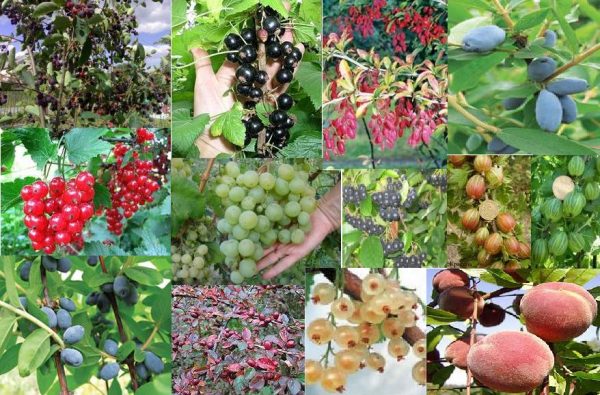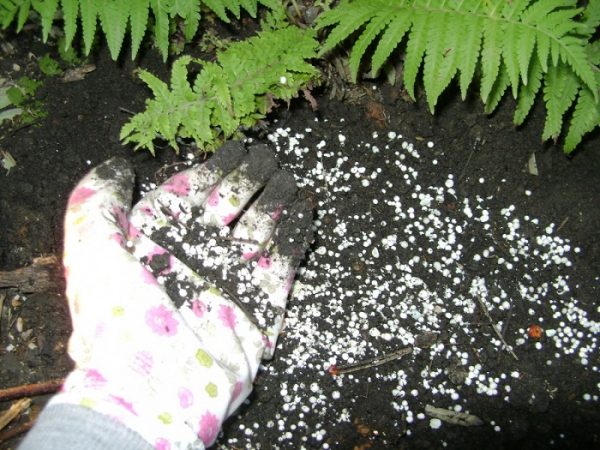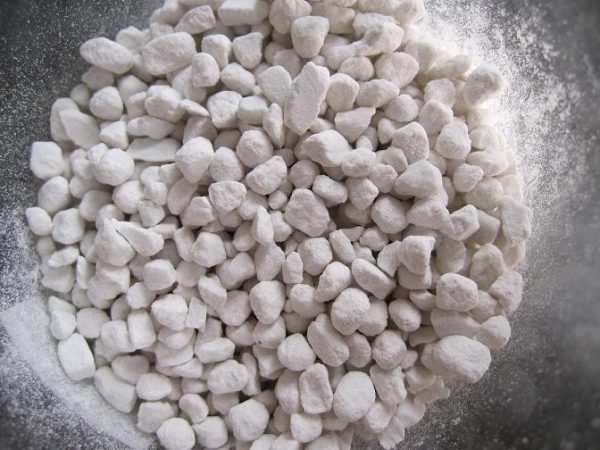What are the benefits of potassium sulfate as a fertilizer?
Content
Description of potassium sulfate
Wood ash has always been a favorite top dressing; ash has been used on various soils. Today, it is not so often that people use firewood to heat the stove, and potash dressings can be bought in the store. Potassium sulfate is produced in the form of a white crystalline powder, it can be yellowish or grayish, it dissolves easily in water. The fertilizer consists of 50% potassium, 18% sulfur, a small amount of magnesium and very little calcium. Unlike ash, it dissolves easily in water, which makes it so easy to use.
Potassium sulfate helps to increase the content of sugars and vitamins in fruits. Thanks to it, the yield of fruit crops increases, the plants tolerate winter better, no matter how harsh it turns out to be. Its use has a good effect on greenhouse plants and in the open field. It serves well for feeding indoor flowers.
Potassium sulfate is used in the cultivation of all types of soils: sod-podzolic, peat, as well as chestnut, sierozem, even acidic. Potassium easily moves inside sandy soils, but does not change the horizon when it enters heavy loamy soils. Therefore, they try to bring it exactly where the main roots of the plant are located. In the fall, it is advised to feed clay soils, and the fertilizer should be buried immediately deeply, and in the spring it should be applied to the light sandy soils and very close to the surface. It can be obtained from the natural mineral langbeinite; coal acts as a catalyst for the thermal reaction. But the industrial production of fertilizer, of course, uses the treatment of solid potassium chloride with sulfuric acid. The result of the reaction of the exchange of potassium chloride with sulfates or with acids containing sulfur or oxygen is such a fertilizer widely used by farmers.
Video "Fertilizer for trees and bushes - potassium sulfate"
This video tells about the fertilizer for trees and bushes - potassium sulfate.
Application
When the leaves of plants begin to dry out, regardless of the amount of water, turn brown, then turn brown - this indicates a lack of potassium in the soil.
To avoid such an unpleasant moment, food is brought in in advance. This can be done with general digging of the site in autumn or spring, it can be combined with watering during plant growth. Potassium sulfate, like ash - this fertilizer can be used throughout the growing season. It gives good results on peaty soils. But on black soil, its use is justified for crops that consume a lot of potassium and sodium, for example, for sunflower, sugar beet, potatoes. The application on chestnut and gray soil varies depending on the specific plant or cultivation technology.
During spring (for sandy soil) or autumn (for clayey) digging a vegetable garden by 1 m2 account for 20-40 g of fertilizer. It is applied both with dry granules and with an aqueous solution, this is determined based on the degree of moisture in the earth. On vegetable beds between rows, they are applied to a depth of 6-8 cm at the rate of 50-100 g per m2... If liquid fertilizer is used, then 20 plants will need 10 liters of water and 30–40 g of dry matter. Under one fruit bush apply from 100 to 200 g, and under one tree - from 150 to 300 g. Some summer residents prefer to water their gardens with potassium-enriched water all the time of plant growth, then 5-10 g of dry fertilizer are dissolved in 10 liters of water.
The use of potassium sulfate increases the yield of cabbage, radishes, cucumbers, eggplants, bell peppers. Fruit trees, raspberries, currants, gooseberries, strawberries, strawberries, thanks to potash feeding, endure cold winters more easily. It was not for nothing that our grandmothers buried wood ash from the stoves under the trees, they said that the ash would help them bear fruit longer, and the fruits would be sweeter. Thanks to potassium sulfate, berries and vegetables become more useful - they, it turns out, accumulate more vitamins, but legumes practically do not need potassium.
How to combine with other fertilizers
The use of potassium sulfate at the same time as chalk or urea is not recommended. It does not need to be used with manure or compost (where manure is also present). Systematic fertilization of the soil with manure reduces the need for potassium. If the soil is acidic, then it is used together with lime - this combination increases the effect of its action. Most often, potassium sulfate is applied to the soil together with nitrogen and phosphorus fertilizers to increase and improve crop yields. On peat soils, it is best used in isolation, because there is already enough nitrogen there.
Purchase and storage
Potassium sulfate is a white crystalline powder, it can be purchased in different packages from 500 g to 25 kg (there are also large packages, but summer residents rarely buy them). It is perfectly stored in dry rooms, does not roll, without causing any trouble to the owners. Fertilizer is produced in two varieties. The second grade is not as clean as the first, allows the presence of dark impurities, it contains 2% less basic substance (48%), and chlorine ions - 1% more (3%), acidic potassium sulfates - twice as much (3% ), which does not affect the quality of the fertilizer. The fertilizer is not poisonous, it does not contain any substances that pose a threat to human health, but if it gets on the mucous membrane, it can cause irritation.
Video "Fertilization through watering"
This video talks about fertilizing plants through watering.



